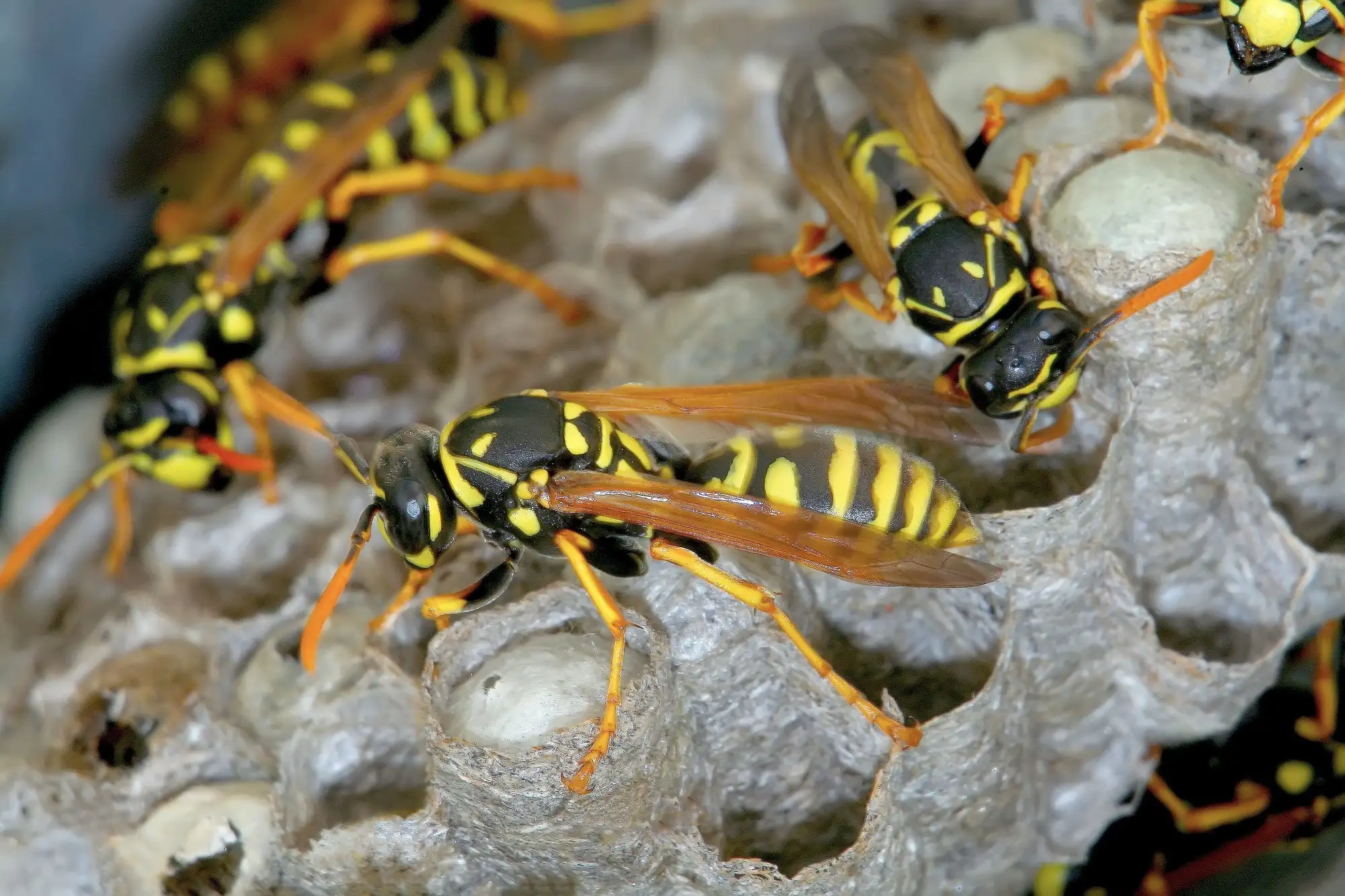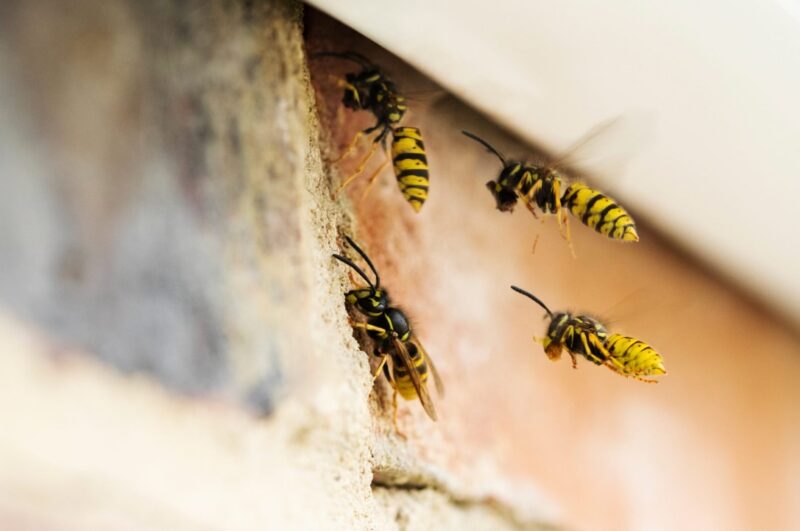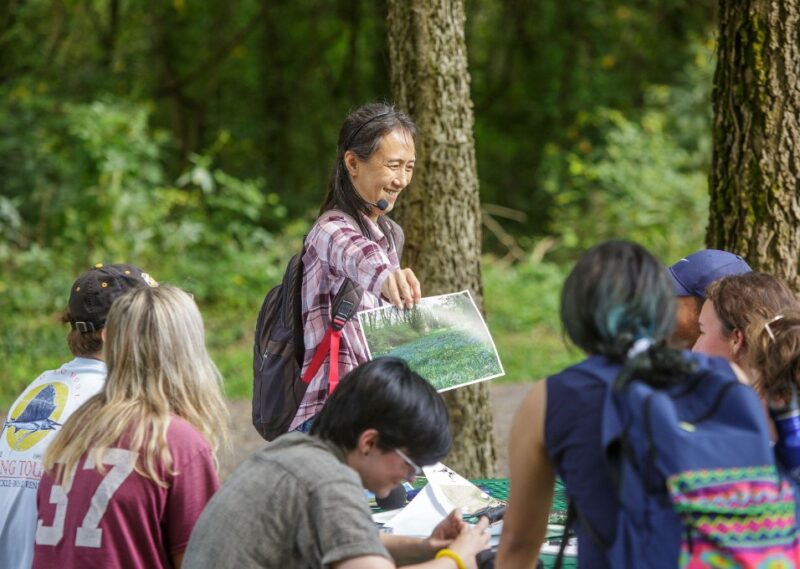Wasp nests are intricate structures built by these industrious insects as a safe haven for their queen and brood. Typically, these nests can be found in sheltered spots like eaves, attics, or even underground.
Made from chewed wood pulp and saliva, these nests have a unique, papery appearance and can house thousands of wasps during peak season. Understanding the lifecycle and structure of wasp nests is crucial before attempting any removal process, as it helps in determining the best course of action.
Identifying the Type of Wasp
Before you embark on the journey to safely remove a wasp nest, it’s important to identify the type of wasp you’re dealing with. Different species, such as yellow jackets, hornets, and paper wasps, have varying behaviors and nest structures.
For example, paper wasps tend to build open, umbrella-shaped nests, whereas hornets and yellow jackets construct larger, enclosed nests. Identifying the species will not only inform you about the aggressiveness of the wasps but also guide you on the safest removal methods.

Safety Precautions
Dealing with wasp nests is not without risks. Wasps can become aggressive when they feel their home is under threat, leading to painful stings. It’s imperative to wear protective clothing, including long sleeves, pants, gloves, and a face covering or veil.
Additionally, choosing the right time for removal is key—early morning or late evening is ideal when wasps are less active. Always have a clear escape route planned, and consider having a second person as a lookout for added safety.
Assessing the Situation
Before taking any action, assess the location and size of the nest. Small, newly formed nests might be easier to manage compared to larger, established ones. If the nest is in a high-traffic area, immediate action may be necessary.
However, if it’s located in a secluded part of your property and not posing a direct threat, you might consider leaving it be, especially since wasps can benefit the environment by controlling other pest populations.
Natural Removal Methods
For those preferring a more environmentally friendly approach, there are several natural methods to consider. One common technique is using a soap and water solution. Soap clogs the wasps’ breathing pores, leading to a quick and humane death.
Mix a significant amount of soap with water in a spray bottle or garden sprayer and apply it to the nest during the cooler hours. Another method involves using essential oils like peppermint, which are known to repel wasps. However, the effectiveness of natural methods can vary, and they might not be suitable for larger nests.

Chemical Solutions
Chemical wasp sprays are widely available and can be effective in eliminating wasp nests. These sprays typically have a long reach, allowing you to stand at a safe distance while applying the insecticide.
It’s crucial to follow the product instructions carefully and apply the spray during the recommended times. Keep in mind that chemical sprays can have environmental and health impacts, so they should be used as a last resort and handled with care.
Professional Removal
In cases where the nest is large, difficult to access, or if you’re allergic to wasp stings, it might be safest to call in professional pest control. Professionals have the experience, equipment, and protective gear to handle the situation safely and effectively.
They can also provide advice on preventing future nests. While this option comes with a cost, the peace of mind and safety it offers can be invaluable.
Preventive Measures
After successfully removing a wasp nest, taking preventive measures to avoid future infestations is wise. Sealing entry points to your home, such as cracks and crevices, can deter wasps from building nests.
Keeping food sources covered and garbage cans sealed can also help. Installing decoy nests in early spring can prevent wasps from building in that area, as they are territorial and typically avoid areas already inhabited by other wasps.

Understanding Wasps’ Seasonal Patterns
Grasping the seasonal habits of wasps can significantly enhance your preventive and removal strategies. Wasps are most active during the warmer months, typically starting their colony formation in spring.
By summer, wasp populations reach their peak, making this the prime time for nest building. As autumn approaches, wasp colonies begin to decline, with most dying off during the winter, except for the queens who hibernate and emerge in spring to start new colonies.
This cyclical pattern provides a strategic window for prevention and removal. Engaging in preventive measures during late winter or early spring can thwart the establishment of new nests. It’s also a time to inspect and repair any potential entry points or nesting sites around your home
Community Engagement and Awareness
Dealing with wasp nests is not just an individual concern; it can be a community-wide issue, especially in residential areas where homes are close together. Engaging with your neighbors and local community can be an effective way to manage and prevent wasp nest problems.
Sharing information about sightings of new nests, successful removal techniques, and preventive measures can benefit the entire community.
Additionally, organizing community clean-up days to remove potential wasp nesting sites, such as abandoned rubbish or dense vegetation, can significantly reduce the areas where wasps can establish new colonies. Community engagement fosters a collective approach to wasp management, enhancing the effectiveness of individual efforts and promoting a safer environment for everyone.

The Role of Patience and Persistence
Removing a wasp nest can be a daunting task that requires patience and persistence. It might take multiple attempts, especially if using natural methods. Continuously monitoring the situation and being prepared to adapt your strategy is crucial.
Remember, the goal is not only to remove the current nest but also to ensure your property remains unattractive to future wasp colonies.
Conclusion
Dealing with wasp nests requires a careful approach that balances effectiveness with safety. Whether you choose natural methods, chemical solutions, or professional assistance, understanding the behavior and preferences of wasps is key.
Always prioritize personal protection and consider the environmental impact of your chosen method. With the right approach and precautions, you can reclaim your space from these unwelcome guests and enjoy a wasp-free environment.
Related Posts:
- The Easiest 5 Ways to Get Rid of Stress - 2024 Guide
- 10 Best Ergonomic Mouse 2024 - Get Rid of Wrist Pain!
- A Comprehensive Guide to Homeowners Insurance in Florida
- Unlock Your App's True Potential: A Comprehensive…
- Ace Your Motorcycle Theory Test: A Comprehensive…
- What Happens When You Quit Smoking and Start Vaping:…









